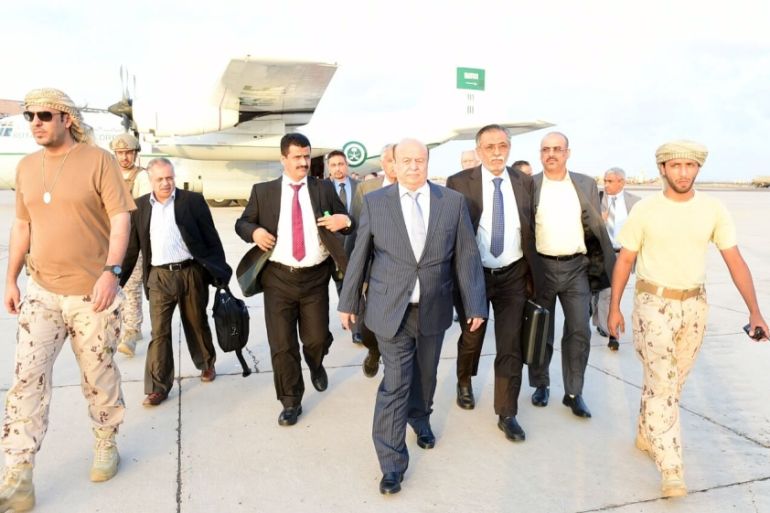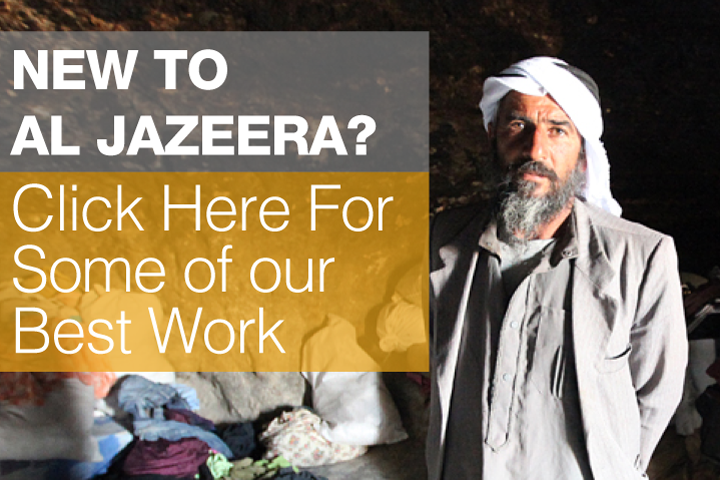Analysis: The battle for Taiz
The liberation of Taiz could represent the real beginning of an end to this tragic war.

Several weeks ago, six-year-old Fareed Shawky pleaded with the doctor as he treated his shrapnel wounds, crying, “la taqbroonah”, which literally means, “Do not bury me.”
Shawky was receiving medical care in a Taiz hospital after being injured in an attack by the Houthi forces.
Keep reading
list of 4 itemsQatar emir condemns ‘genocide’ in Gaza, urges ceasefire at GCC summit
‘Enduring commitment’: Key takeaways from US-GCC joint statement
Analysis: Efforts to end Assad isolation gather speed after quake
He later died. Shawky’s words, however, revealed the extremely dire humanitarian crisis in Yemen, and particularly in Taiz.
A UNICEF report on Yemen released this month stated that more than 600 Yemeni children have been killed since the beginning of the war in March 2015. The report also indicated that more than 20 million Yemenis are in urgent need of humanitarian assistance, including access to clean water, sanitation, and basic healthcare.
Thousands of civilians in Taiz have been trapped for months while UNICEF has worked diligently to deliver water to them.
RELATED: What is the solution to the war in Yemen?
|
The question now, however, is whether or not the Houthis and Saleh can be trusted once again to end the conflict through peaceful negotiations. The short answer is no.
|
Despite the siege and the harsh conditions, Yemen’s former President Ali Abdullah Saleh and the Houthi forces, having expended substantial military efforts and financial resources seeking either the support or elimination of important tribal leaders in northern Yemen, have repeatedly failed to take over Taiz.
Yet, the Saudi-led coalition did not rush to aid the anti-Houthi forces in Taiz during the early months of the battle. Indeed, the topography of Taiz has played a significant role in halting the advance of the Saudi-led coalition forces towards the city during the last few months.
Also, local reports of landmines being planted by Houthi and Saleh’s forces around Taiz have further delayed and complicated the liberation of the city.
However, there seems to be a strong determination on the part of the Saudi-led coalition to liberate Taiz, which is the most populous province in Yemen, from the siege imposed by the Houthi-Saleh forces.
RELATED: Yemen’s government declares Taiz ‘a disaster area’
|
|
The Saudi-led military effort to capture Taiz comes against the background of statements made on Saturday by Houthi spokesperson, Mohammed Abdul Salam, confirming that a Houthi delegation was to travel to Oman for preliminary consultations on UN-sponsored Geneva peace talks aimed at resolving Yemen’s complex civil war.
Abdul Salam said the Houthis, who seized Yemen’s capital, Sanaa, in September 2014, accepted the invitation for consultations in Oman after receiving a “positive response” to their suggestions for the talks agenda.
“We hope [the dialogue] will be serious and constructive, leading to a halt in aggression, lifting of the siege, and revival of the political process,” Abdul Salam wrote in a Facebook post announcing the trip.
Nonetheless, the fate of the second round of Geneva negotiations between Yemen’s warring factions remains uncertain.
The first round, held in June 2015, had failed to end the ongoing war. Both the Saudi-led coalition and President Abd-Rabbu Mansour Hadi’s government have accused the Houthi-Saleh alliance of showing little commitment to implementing the UN Security Council resolution, which calls for the Houthis’ complete withdrawal from key cities, the surrender of heavy weapons, and the return of Hadi’s government to Sanaa.
The question now, however, is whether or not the Houthis and Saleh can be trusted once again to end the conflict through peaceful negotiations.The short answer is no.
 |
But many analysts argue that any political solution that does not lead to a complete military defeat or surrender of the Houthi-Saleh forces in Yemen will certainly represent a tremendous setback for the Saudi-led war effort.
The Saudi-led coalition has made considerable progress in this regard by taking control of small towns leading to Taiz, which will secure a continuous military supply for the anti-Houthi forces.
The coalition has also been successful in recapturing the Bab al-Mandab strait from Houthi forces in early October, cutting off any military aid expected from the Red Sea to the Houthi forces surrounding Taiz.
Furthermore, Hadi’s recent return to Aden indicates that the liberation of Taiz features highly on the military agenda of the Yemeni government because, without such a move, Aden will remain vulnerable to possible Houthi attacks.
Also, the Saudi-led coalition is making some military progress in southern Yemen, where Aden now enjoys a relative degree of security and stability concurrent with massive mobilisation to liberate Taiz in the coming weeks.
In the meantime, there are some signs that the Houthis’ tight grip on Sanaa is beginning to loosen.
In an unexpected visit to one of the largest public high schools in the city of Sanaa, the supreme leader of the Houthis’ so-called revolutionary council, Muhammed Ali al-Houthi, received an unpleasant welcome from the students who chanted the national anthem instead of shouting the Houthi slogan of “Death to America”.
This could suggest that the fear of Houthis in Sanaa is beginning to wane, although the war in Yemen is certainly not over.
Nevertheless, the liberation of Taiz could represent the real beginning of an end to this tragic war.
Gamal Gasim is a Yemeni political science professor.